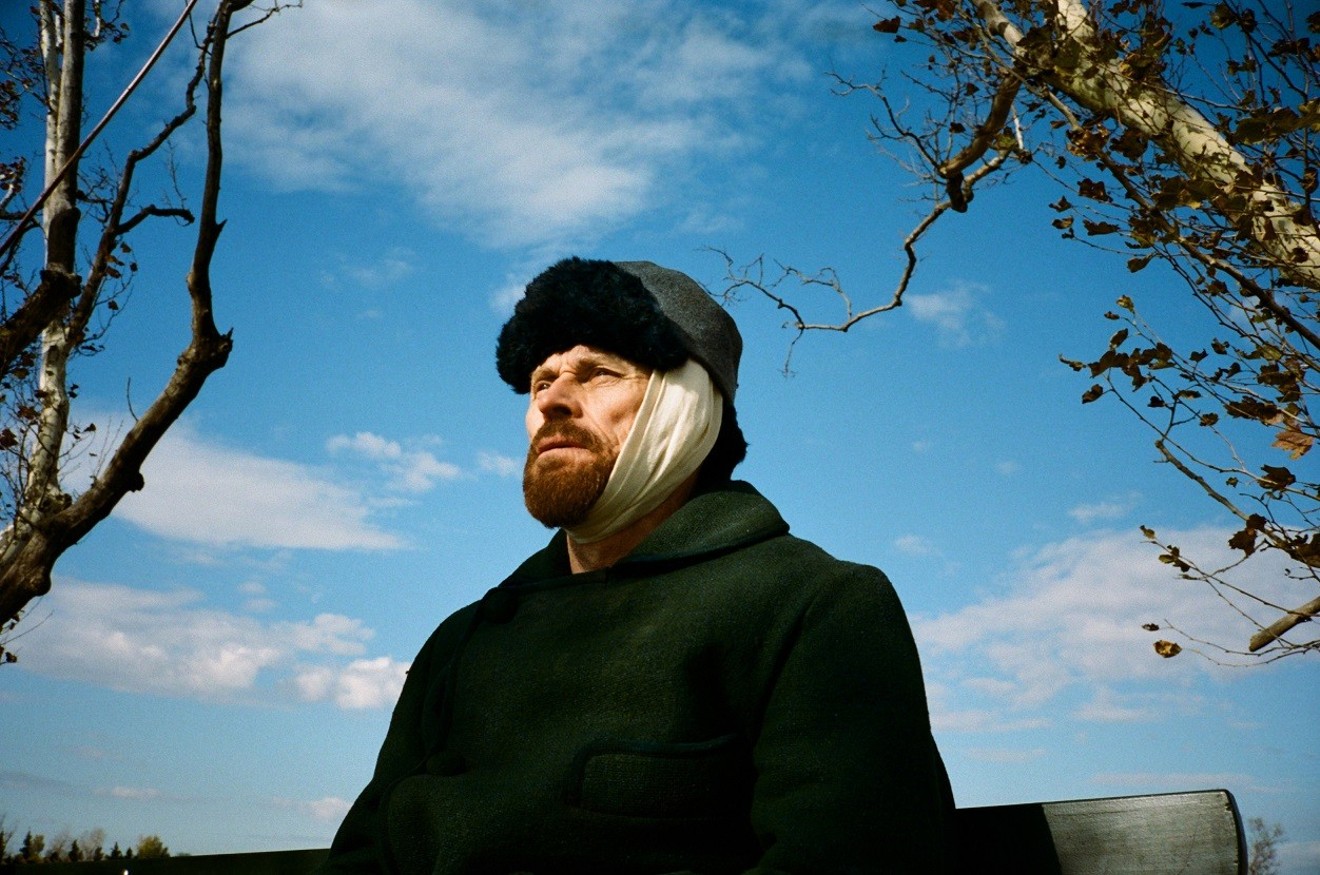Much like its tormented subject, Julian Schnabel’s marvelous film about the last days of Vincent van Gogh stares at and savors its world and then renders what it has seen in incandescent art. Far from another reductive life-of-the-artist Oscar job, At Eternity’s Gate is committed to what its subject saw — how its subject saw — rather than just how commandingly its star reels through his big speeches. Since the star in this case is Willem Dafoe, viewers likely would be satisfied watching a great actor let rip, but Dafoe’s performance is searching and tender, his van Gogh struggling to bear the weight of the beauty he sees. He and Schnabel have crafted a uniquely illuminating and non-didactic portrait — not of the artist himself, exactly, but of the artist’s perceptions.
Probing the painter’s senses as he tramps about the south of France, Schnabel’s film is drunk with light, a little touched in the head itself, giving over to van Gogh’s perspective through gorgeously disorienting POV shots: We gaze down at his legs as he passes through amber weeds. As he regards the sun-struck fields of Provence, flares of light seem to singe the camera lens, and often the lower third of the screen goes a little hazy, the foliage no longer specific stalks and leaves but now its smeared essence. That, of course, suggests van Gogh’s work; a painter of significance himself, Schnabel (Before Night Falls, The Diving Bell and the Butterfly) has mastered the depiction of artistic creation onscreen. Here he shows us one painting’s journey from conception to near completion, his focus on the canvas itself, from the painter’s perspective. Most movies in this genre reduce the production of art to flashes of inspiration followed by frenzied labor; Schnabel is interested in process rather than magic. Through van Gogh’s eyes we see the painting — of a pair of boots — emerge, the mundane made magnificent, the mood one of ecstatic patience.
Schnabel at times saturates the colors, making them more vivid or wan than nature might, to suggest van Gogh’s perceptions. The result veers from rapturous to alienating, not just an assault on the senses but an inquiry into just what such overwhelming sensitivity might do to a mind — and an artist.
Around these vignettes and reveries, Schnabel and his co-screenwriters Jean-Claude Carrière and Louise Kugelberg have structured the film as a series of one-on-one conversations, usually between van Gogh and some representative of his age, a maid or a doctor or a priest who see his work as garish, confounding, unbeautiful. The chief exception: Oscar Isaac’s Paul Gauguin, whose colloquies with van Gogh prove a lifeline, evidence that the work has merit despite the world’s indifference. Van Gogh’s businessman brother Theo (Rupert Friend) also is supportive, though the painter’s talks with Theo and Gauguin eventually are disrupted by his unquiet mind.
Looping dialogue we’ve already heard, superimposing faces atop each other, the filmmakers suggest with rare clarity a mental unraveling. In this swirl of uncertainty, van Gogh — and viewers — eventually must work to isolate what’s transpiring now from all that’s come before and all that the painter fears. The film omits the wiki-history info-dump scenes common in lesser biopics, instead steeping us in the mind and senses of a painter who never got the word that his way of seeing would one day shape the world’s.
[
{
"name": "Air - MediumRectangle - Inline Content - Mobile Display Size",
"component": "18478561",
"insertPoint": "2",
"requiredCountToDisplay": "2"
},{
"name": "Editor Picks",
"component": "16759093",
"insertPoint": "4",
"requiredCountToDisplay": "1"
},{
"name": "Inline Links",
"component": "17980324",
"insertPoint": "8th",
"startingPoint": 8,
"requiredCountToDisplay": "7",
"maxInsertions": 25
},{
"name": "Air - MediumRectangle - Combo - Inline Content",
"component": "16759092",
"insertPoint": "8th",
"startingPoint": 8,
"requiredCountToDisplay": "7",
"maxInsertions": 25
},{
"name": "Inline Links",
"component": "17980324",
"insertPoint": "8th",
"startingPoint": 12,
"requiredCountToDisplay": "11",
"maxInsertions": 24
},{
"name": "Air - Leaderboard Tower - Combo - Inline Content",
"component": "16759094",
"insertPoint": "8th",
"startingPoint": 12,
"requiredCountToDisplay": "11",
"maxInsertions": 24
}
]












